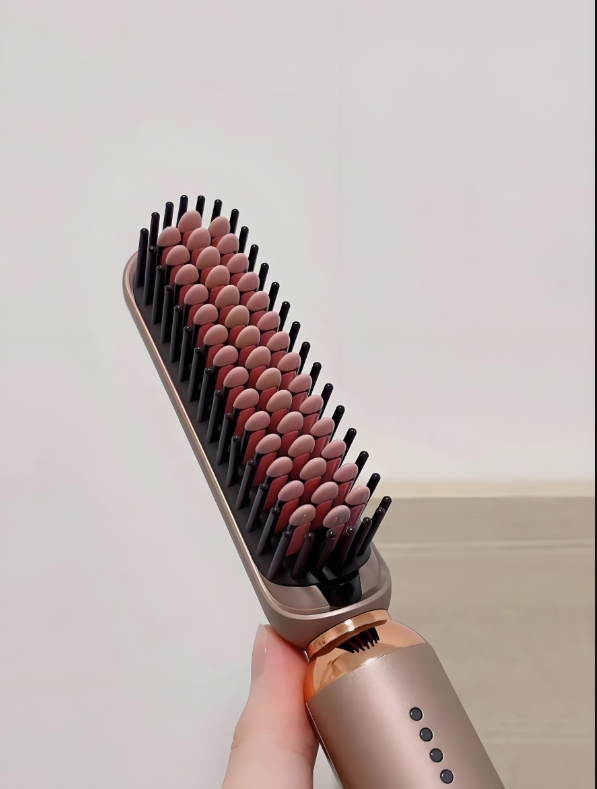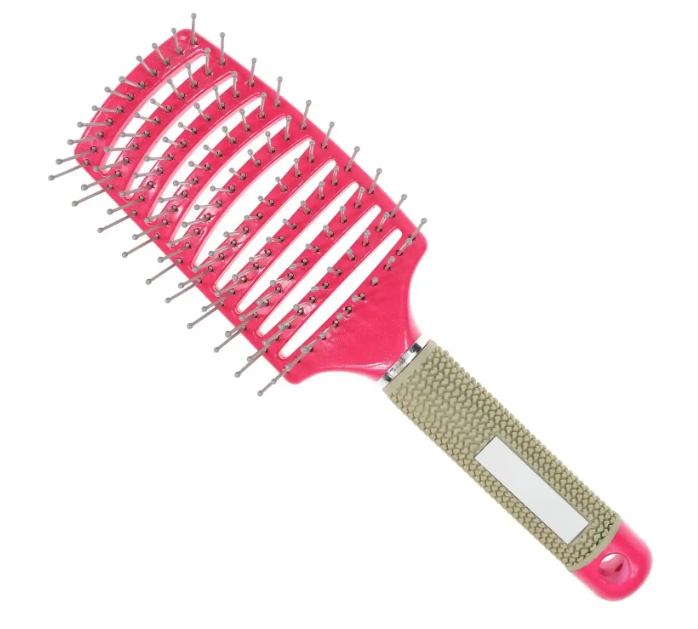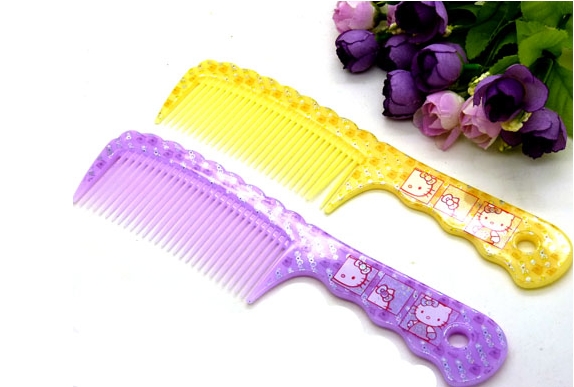From a consumer's perspective, selecting a hair straightener comb that suits you requires a comprehensive consideration of multiple factors, including hair type, usage needs, comb material, and design features. Here are some practical suggestions to help you choose the most suitable hair straightener comb:
From a consumer's perspective, selecting a hair straightener comb that suits you requires a comprehensive consideration of multiple factors, including hair type, usage needs, comb material, and design features. Here are some practical suggestions to help you choose the most suitable hair straightener comb:
Comb Teeth Selection: Fine and thin hair is suitable for combs with fine teeth. A denser tooth pitch can better detangle the hair and prevent knots.
Material Recommendation: Plastic comb teeth are lightweight and cause less pulling on the hair. Natural bristle combs (such as boar bristle combs) can also provide a gentle combing effect and help enhance the natural shine of the hair.
Design Feature: Opt for combs with rounded tooth tips to avoid damaging the hair and scalp.
Comb Teeth Selection: Thick and coarse hair is better suited to combs with wide teeth. A wider tooth pitch allows for easy combing and reduces pulling and damage.
Material Recommendation: Metal comb teeth (such as stainless steel or aluminum alloy) are more durable and offer excellent combing performance. Wooden comb teeth (such as boxwood) provide a comfortable grip and can enhance the natural shine of the hair.
Design Feature: Choose combs with flexible teeth to adapt to different hair textures and reduce hair pulling.
Comb Teeth Selection: Curly hair is best combed with wide - toothed combs. The wide tooth pitch can easily detangle curls and prevent knotting.
Material Recommendation: Plastic comb teeth are lightweight and suitable for daily use. Natural bristle combs offer a gentle combing experience and help maintain the natural shine of the hair.
Design Feature: Select combs with anti - static designs to reduce static electricity during combing and prevent frizzy hair.

Comb Teeth Selection: Combs with either fine or wide teeth are suitable, depending on the thickness and density of your hair.
Material Recommendation: Plastic comb teeth are convenient for daily use due to their light weight. Natural bristle combs provide a gentle combing effect and enhance hair shine.
Design Feature: Choose combs with an ergonomic handle design to ensure a comfortable grip and reduce fatigue during use.
Comb Teeth Selection: Wide - toothed combs or round barrel combs are ideal for styling and setting hair.
Material Recommendation: Metal comb teeth (such as stainless steel or aluminum alloy) are durable and effective for styling. Wooden comb teeth (such as boxwood) offer a good grip and natural shine.
Design Feature: Select combs with anti - static designs to minimize static and keep hair looking sleek during styling.
Comb Teeth Selection: Folding combs or small - sized combs are convenient for travel.
Material Recommendation: Plastic comb teeth are lightweight and perfect for travel. Natural bristle combs provide a gentle combing experience on - the - go.
Design Feature: Choose combs with a non - slip handle design to ensure a secure grip during use.

Advantages: Lightweight, durable, and affordable.
Disadvantages: Some plastic combs may generate static electricity, causing frizzy hair.
Suitable for: Ideal for daily use, especially for consumers on a budget.
Advantages: Durable, effective for combing, and less likely to generate static.
Disadvantages: Higher in price and heavier in weight.
Suitable for: Consumers with high - performance combing requirements, particularly those with thick, coarse, or curly hair.
Advantages: Provide a comfortable feel, enhance natural hair shine, and are less likely to generate static.
Disadvantages: Higher in price and require regular maintenance.
Suitable for: Consumers seeking a natural and premium combing experience.

Rounded Tooth Tips: Minimize damage to hair and scalp, making them suitable for daily use.
Pointed Tooth Tips: Offer better combing performance but may cause some irritation to the scalp, suitable for styling purposes.
Ergonomic Design: Ensures a comfortable grip and reduces fatigue during use.
Non - Slip Design: Keeps the comb stable in hand and prevents it from slipping.
Anti - Static Coating: Reduces static electricity during combing and prevents frizzy hair.
Natural Bristles: Natural bristles can absorb static electricity from the hair and provide a gentle combing effect.
